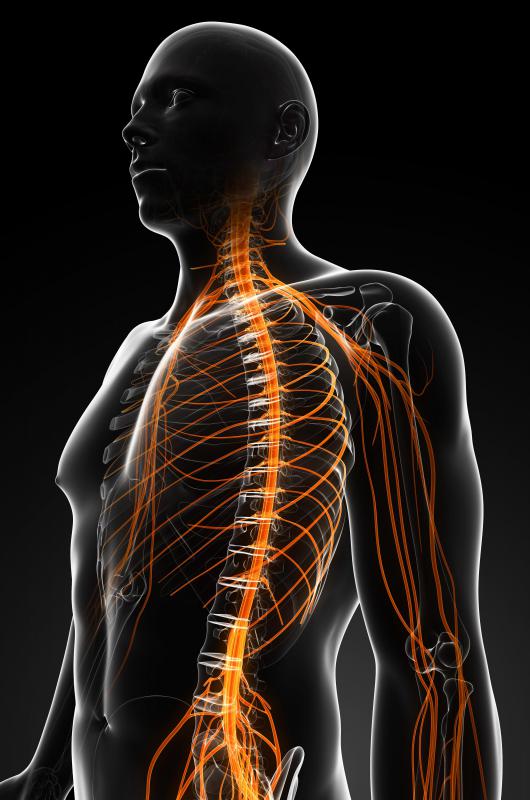At TheHealthBoard, we're committed to delivering accurate, trustworthy information. Our expert-authored content is rigorously fact-checked and sourced from credible authorities. Discover how we uphold the highest standards in providing you with reliable knowledge.
What are the Different Types of Human Nerves?
There are three main types of human nerves in the body: sensory nerves, motor nerves, and spinal nerves. These types of human nerves are distinguished from each other based on their neurons. Neurons are nerve cells that respond to outside stimuli by electrically and chemically signaling related cell networks within the central nervous system. Each network of nerves has a distinct function.
The human nerves that allow people to see, hear, touch, smell, and taste are sensory nerves. Sensory neurons are activated by external inputs. For example, when a person touches a coarse material, the sensory nerve cells transmit electrical impulses to the central nervous system and the brain where the impulses are interpreted as the perception of coarseness. These nerves are the only human nerves that respond to physical sensory perceptions like light and dark, noise, heat, and texture.

Motor nerves are the human nerves that control voluntary movements. These nerves originate in the brain or spinal cord and innervate, or provide nerves to, all the muscles in the body. The motor nerves work by sending impulses from the brain or spinal cord to the muscles. Such impulses cause the muscles to expand or contract, subsequently facilitating movement.

Within motor nerves, there are three types of neurons that transport the motion signals sent by the brain and spinal cord. Somatic motor neurons are connected to the muscles that control movement of the arms, legs and abdominal muscles. Special visceral motor neurons stimulate movement in the face and neck. Finally, general visceral motor neurons galvanize the heart and arteries.

Spinal nerves are also called mixed nerves because they combine the sensory function of sensory nerves and the movement function of transport nerves. The human spinal column contains 31 pairs of these nerves. In human anatomy, each pair of mixed nerves links the backbone to a section of the body and has its own subcategory. Cervical nerves provide movement and feeling to the neck and arms. Thoracic nerves aid in breathing. Lumbar nerves are the spinal nerves that stimulate the legs. The sacral nerves facilitate the digestive and reproduction processes by innervating the bladder, intestines and reproductive organs.

Mixed nerves are able to serve two functions because they branch into two roots: one composed of sensory fibers and one composed of motor fibers. The nerve root made of sensory fibers transports perception related information like sight, touch and smell from the body to the spinal cord. Motor nerve roots send impulses from the spinal column to the muscles. The binary nature of spinal nerves means that their purpose overlaps with motor nerves and sensory nerves.
AS FEATURED ON:
AS FEATURED ON:
















Discuss this Article
Post your comments